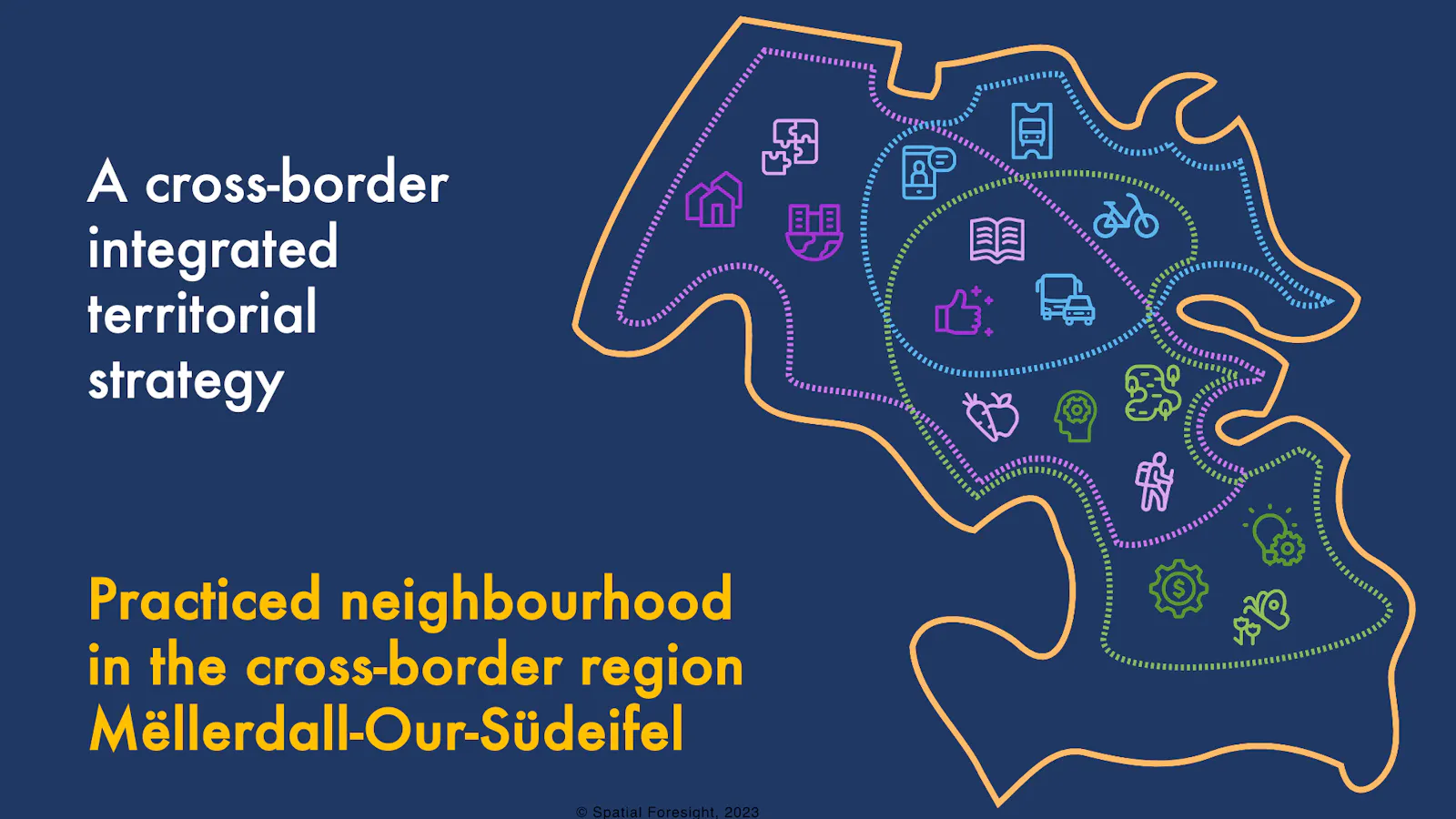Practiced neighbourhood in the cross-border region Mëllerdall-Our-Südeifel
January 2024

Integrated territorial strategies are an important tool to master today´s complex development challenges. As discussed in an earlier blog post on territorial strategies (Opens in a new window), finding the appropriate territorial focus for a strategy is essential. Often this leads to a functional area approach, as where the definition of the functional area (Opens in a new window) is closely linked to the objectives of the strategy, as discussed in an other blog post (Opens in a new window). In border regions, such functional areas may very well stretch beyond national borders and call for cross-border territorial strategies.
Mëllerdall-Our-Südeifel strategy
Currently, a number of such cross-border territorial strategies are elaborated along Luxembourg’s borders with Belgium, France and Germany. One of them concerns the Luxembourgish-German border region Mëllerdall-Our-Südeifel where the national border is defined by the rivers Our and Sauer. In November 2023, stakeholders in this region agreed on a strategy to intensify cross-border cooperation and work towards a sustainable and vibrant future.
In the context of the Interreg Programme for the Greater Region, the functional cross-border region Mëllerdall-Our-Südeifel has been identified as an area where long-standing collaborations can be taken to a new level. It builds on a long history of cross-border cooperation between Luxembourg and the German state of Rhineland-Palatinate in this region. It involves among others the establishment of the German-Luxembourg Nature Park back in 1964. This joint venture laid the groundwork for an increasingly integrated approach to managing the region’s natural treasures.
With the new strategy, this collaboration shall be further stimulated. The strategy has been elaborated in a co-creative and participative process, designed and facilitated by Spatial Foresight, drawing on the insights and priorities of key players in the region. The process involved representatives from nature parks, LEADER local action groups, nature, forestry, and agricultural administrations, as well as from municipal and regional levels, from the fields of tourism and culture, along with ministerial representatives from the areas of spatial development, environment, nature conservation, water management and tourism.
To read this post you'll need to become a member. Members help us fund our work to ensure we can stick around long-term.
See our plans (Opens in a new window)
Already a member? Log in (Opens in a new window)


